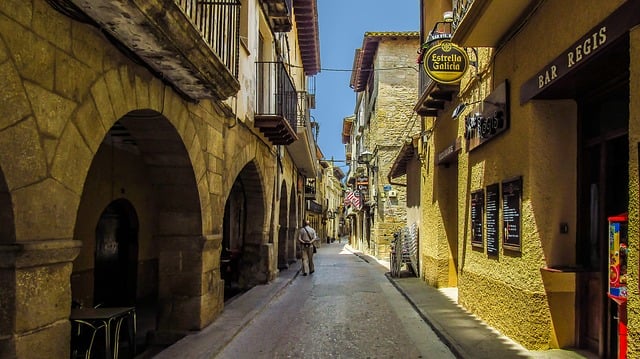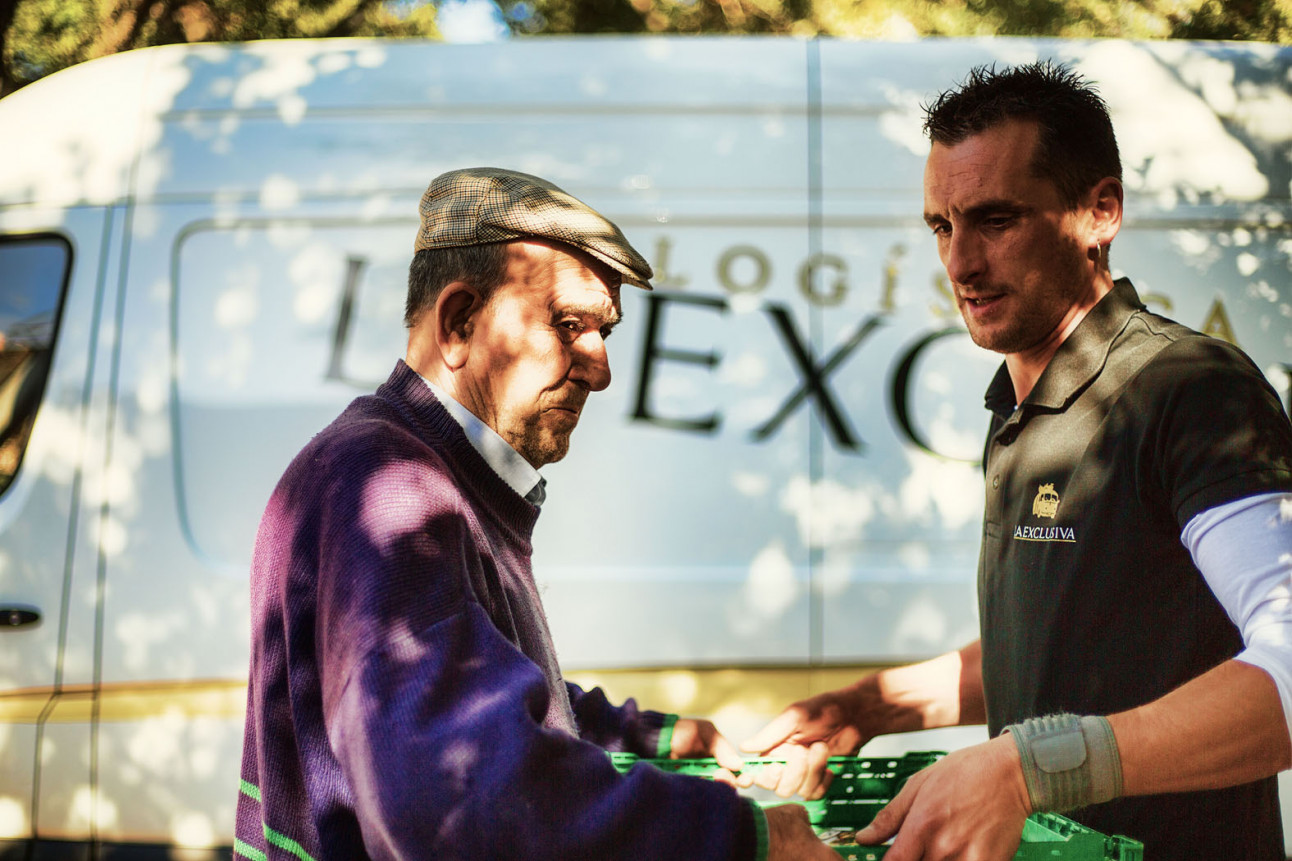Village properties are much cheaper
You’d probably already guessed this was the case, but to give you a more exact idea, a 2020 study by property website Idealista found that properties in villages with fewer than 5,000 inhabitants were on average 52 percent cheaper than homes in provincial capitals.
The average price per square metre for rural properties in Spain is €834/sqm whereas in the big cities its €1,729/sqm.
If you’re looking to move to a village which is within driving distance of the region’s capital, the biggest price differences are in villages close to Barcelona, Madrid, Seville, San Sebastián, A Coruña, Salamanca and Zaragoza, all of which have rural properties at least 60 percent cheaper than in their provincial capitals.
They’re generally underpopulated
Even though Spain’s population has grown by more than 15 percent in the past 20 years, a third of Spanish municipalities have lost 25 percent of their population.
Eighty percent of villages in the regions of Castilla y León, Extremadura and Asturias have lost residents in the last two decades, whereas in Madrid and the Balearic Islands this rural underpopulation has been far less marked (6 percent).
There aren’t that many young people
In 2019, there were 311 villages in Spain without a single inhabitant under 20 and 402 “pueblos” where more than half the population was over the age of 65.
That means that if you have a family with young children, you should consider what it will mean for them to not have any friends nearby, and there’s a chance they might have to travel far to go to school.
The region with most villages with no young people is Castilla y León (168) followed by Castilla y La Mancha (69) and Aragón (47), all in Spain’s interior.
It’s worth noting that this trend isn’t as manifest in Spain’s coastal regions.
 The main street in the village of Valderrobles in Aragón. Photo: Vane Montes/Pixabay
The main street in the village of Valderrobles in Aragón. Photo: Vane Montes/Pixabay
Many offer incentives for you to move
If you need some convincing before choosing to move to rural Spain, maybe the prospect of being paid to relocate to a specific village or getting a job or rent-free home will do the job.
There’s a constant turnaround of villages in Spain offering incentives to individuals and families for them to move to their village.
The trouble often is finding the latest offers and taking advantage of them in time, as there generally tends to be a fair amount of interest from city dwellers in Spain who want to start a new life on the cheap en el campo (in the countryside).
READ ALSO: How to find Spanish villages that are helping people move there
The internet in Spanish villages is getting better
An increasing number of villages and regional authorities are realising that if they want to attract new inhabitants who are of a working age, especially with the advent of remote working, they need to offer good internet speeds.
In recent years some villages in Gran Canaria, Aragón, Cantabria and other regions of Spain have decided to install fibre optic internet specifically to attract remote workers, and Spanish telecoms giant Telefónica has helped bring free Wi-Fi to 1,000 villages in Spain as part of the EU’s WiFi4EU programme.
READ MORE: 500 Spanish villages that are getting free Wi-Fi.
However, not all of rural Spain has superfast internet yet. Unpopulated areas in Aragón, Galicia, Asturias and Castilla y León are lagging behind, as evidenced in this 2021 map by the Spanish government which shows the percentage of the population with access to 100Mbps connections in each region.

Could remote working also mean more remote living?
A 2020 report in Spain’s El País newspaper titled “How teleworking is giving wings to empty Spain” highlighted how a number of Spanish villages have indirectly benefited from the coronavirus lockdowns and travel restrictions, with more digital workers choosing to make rural Spain their new home.
Aside from the improvement to rural internet speeds mentioned earlier, the acceptance and normalisation of remote working – something which was relatively novel in Spain before the pandemic – is resulting in more young people weighing up the pros and cons of living in a city or a village.
The lower cost of living, the comparative amount of freedom that can be enjoyed in terms of mobility restrictions (with the threat of new lockdowns looming) and even the increasing number of rural coworking spaces dotted around Spain are all contributing to a change in mentality among many remote workers.
Speaking Spanish is a must
This usually applies to living in Spanish towns and cities as well, but in a rural setting, where residents are far less likely to have an international background or speak English, having a good grasp of the Spanish language is pretty much essential.
If you’re an English speaker who doesn’t think they can learn Spanish, you can always consider moving to one the villages in Spain where Brits outnumber locals, although you will obviously not get to truly experience what life in Spain is like.
Spanish people in rural communities are friendly and will probably want to stop to chat if they bump into you on the street.
Logically, you are far more likely to feel like an integral part of a close-knit community if you can communicate with them, whether it’s at the local bar, shop or hardware store.
You may also be able to offer your neighbours English lessons, as regional authorities with large rural communities such as Extremadura and Aragón are already trying to promote foreign language learning among villagers to help boost tourism opportunities.
Plenty of opportunities to do good and do business
If you want to make a difference and help to improve the lives of people in rural communities in Spain, there’s a growing number of organisations that will welcome your help and any bright ideas you may have.
READ MORE: How Spaniards are helping to save the country’s 4,200 villages at risk of extinction
There are already initiatives such as adopting an olive tree, offering meals on wheels to remote villages and repopulating villages with newly arrived migrant families.
There may be an invaluable service that you can provide to a village in Spain that you turn into a business as well, offering local solutions to local problems.

Village life isn’t for everyone
Even though there are signs that repopulation and modernisation is breathing new life into many villages across Spain, most of the usual challenges that come with living in a rural setting persist.
There are fewer shops, services, health centres, schools and kindergartens. Jobs are few and far between and many properties aren’t refurbished and will need to be made more energy efficient and habitable (remember that much of Spain’s interior is scorching hot in the summer and bitter cold in the winter).
On the other hand, you may make huge quality of life gains by moving to a peaceful, natural setting where you have a simpler but more fulfilling day to day.
The decision, as well as the choice of location, is ultimately yours.
Moving to the countryside appears to be experiencing a rebirth in Spain currently, with new websites such as venteaviviraunpueblo.com (cometoliveinavillage.com) offering Spaniards and foreigners the chance to handpick the Spanish village that’s right for them.
READ MORE:



 Please whitelist us to continue reading.
Please whitelist us to continue reading.
Member comments